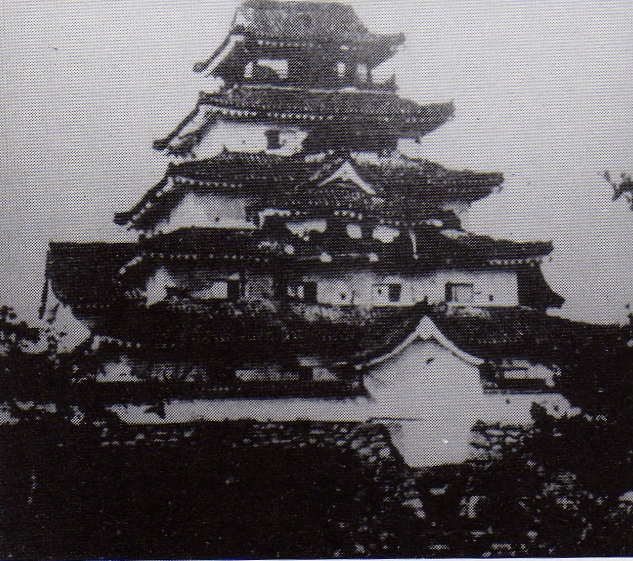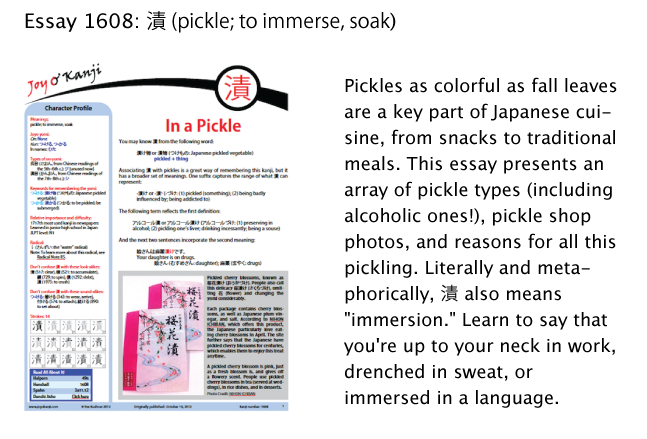Blue Moon Blog: Part II
Last week I started following "moon trails." That is, a correspondent (whom I call the Man from Osaka) sent me a long, complicated email about the moon, and just about everything he said inspired me to follow a trail of inquiry. I shared two of these trails in the previous JOK Notebook. Now we'll investigate three more.
Moon Trail 3: A Song
The Man from Osaka informed me about a famous piece of music. Here's what he said:
滝廉太郎が作曲した 荒城の月 と言う名曲があります。
“Moon of the Ruined Castle,” which Rentaro Taki composed, is a famous piece of music.
滝廉太郎 (たき れんたろう: person's name); 作曲 (さっきょく: composition (of music)); 荒城 (こうじょう: ruined castle); と言う (という: called thus); 名曲 (めいきょく: famous music)
Ah, the composer's name incorporates 滝 (waterfall), which I wrote about in essay 1555 on 滝, and 太郎 (たろう), a name or name suffix that I discussed extensively in essay 1936 on 郎 (male name suffix). Always great to run into old friends this way!
And what's this about a "ruined castle"?! I've never heard that term; the definition came from Breen's dictionary. I could reword it as "a castle in ruins," but that wouldn't flow well in the translated song title. Anyway, I like "ruined castle." It makes me think of an elaborate sandcastle that a bratty sibling has kicked in with spiteful glee.
As to the song, I've found versions of it here:
YouTube, where it sounds operatic.
Uta-Net, which features a solo singer. This version has a lovely video of an unruined castle (among other things) and presents the lyrics both on the screen and below.
You can find the lyrics presented clearly and beautifully with furigana on a third page.
According to my proofreader, the song essentially says, "Nothing will stay the same forever." He offers a gorgeous translation that he characterizes as rough:
In spring there must have been flowery parties where many people drank together in the tall castle (which now is mere ruins).
There must have been moonlight beautifully seeping through the thousand-year-old pine tree branches into the court. Where did all those glorious days go?
Where indeed?
And in which castle did all this happy debauchery occur? According to Wikipedia sites in Japanese and English, Bansui Doi (who wrote the lyrics) took his inspiration from Aoba Castle, Sendai Miyagi, or Aizu-Wakamatsu Castle (this last one being in Aizu-Wakamatsu, Fukushima Prefecture). Meanwhile, Taki (who composed the music) may have been thinking of Oka Castle (Takeda in Oita Prefecture) or Toyama Castle (in Toyama, Toyama Prefecture).

Aizu-Wakamatsu Castle after the Battle of Aizu. This photograph is from 1868!
Moon Trail 4: A Tanka
Now we come to the tanka (a 31-syllable poem) that the Man from Osaka shared with me:
月見れば
千千にものこそ
かなしけれ
わが身一つの
秋にはあらねど。
As I view the moon,
Many things come into my mind,
And my thoughts are sad;
Yet it's not for me alone,
That the autumn time has come.
見る (みる: to view); 千千に (ちぢに: in pieces); こそ (for sure (particle emphasizing the preceding word)); かなしけれ (悲しけれ: sad, shown in an archaic form that's equivalent to the modern 悲しい); わが身 (わがみ: myself); 一つ (ひとつ: only (after a noun); 秋 (あき: autumn)
I found the English translation online. This tanka was part of a famous poetry anthology. According to the fourth entry on one site, someone named Fujiwara compiled that anthology, drawing on poetry from as early as the Heian era (794–1185).
The anthology was called 百人一首 (ひゃくにんいっしゅ), which means that 100 poets (百人, literally "100 people") contributed one poem apiece. Although 一首 looks as if it means "one neck," it translates as "one poem" in this case. As I've now learned, -首 can be a counter for poems and songs. Is there no end to the knowledge tucked in the nooks and crannies of the Japanese language and culture, just waiting to be discovered?!
The third entry of that same website indicates that the Japanese have turned this anthology into a card game, primarily playing it on New Year's Day. You mean they ring in the new year by testing each other's knowlege of ancient poems, rather than by drinking and watching football games?!
"Our" poem is by a man named 大江千里 (おおえ の ちさと), says the Man from Osaka, who identifies the poet as a distant ancestor! Ah, Oe has his own Wikipedia page. How modern for a poet who lived in the 8th and 9th centuries!

Wikipedia includes the above image of Oe. You can see his name in the rightmost column. After that we find the anthologized tanka. The 月 shines brightly and clearly here!
Moon Trail 5: The Moon at Ishiyama-dera Temple
The Man from Osaka wrote much more about the moon, but I couldn't untangle several of his sentences. Through one particularly gnarly bit of text, I learned (partly via Wikipedia) that Murasaki Shikibu allegedly began writing The Tale of Genji at Ishiyama-dera Temple on the night of the full moon in August 1004.
That temple appears in a woodblock print by Hiroshige called "The Autumn Moon at Ishiyama Temple."

"The Autumn Moon at Ishiyama Temple"
Hiroshige (1797–1858)
This print is part of a series called 近江八景 (おうみはっけい: 8 Views of Omi). And what's Omi? It's the old name of a province, now known as Shiga Prefecture, not far from Kyoto.
Ah, 江 appears both in the series name and in 大江, the surname of our ancient tanka writer. Everything comes together and goes round and round, the trails taking us up and over mountains until we nearly reach the moon!
Introducing the Pickle Essay
If you're going to be walking all those trails, and particularly if you plan to head toward the moon, you're going to need sustenance. Have you considered pickles? Essay 1608 on 漬 is now out, offering a colorful, crunchy change of pace. Here's a sneak preview:

Have a wonderful weekend, whether it involves pickles, the moon, or something in between.

Comments